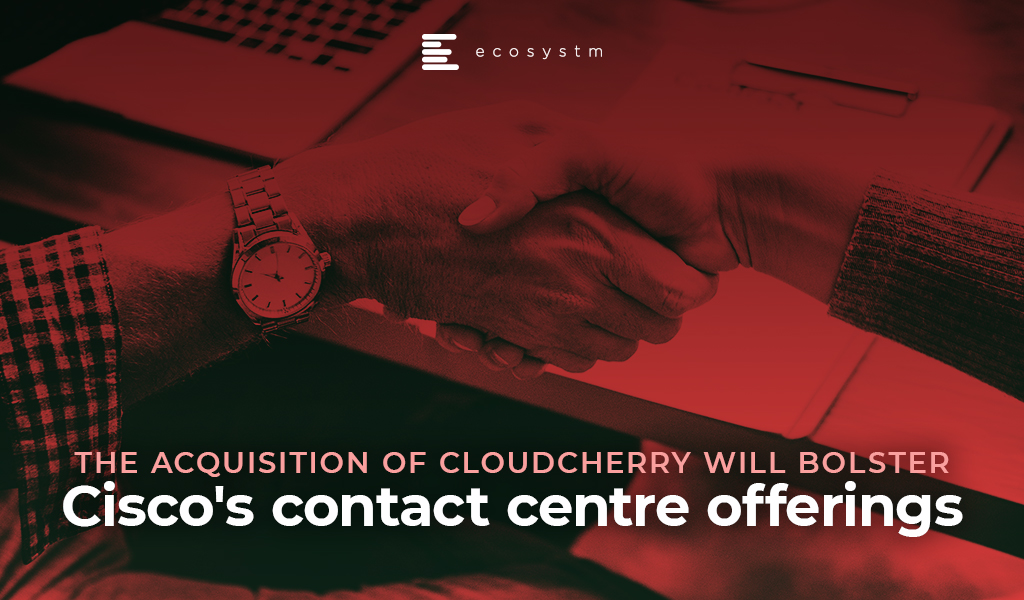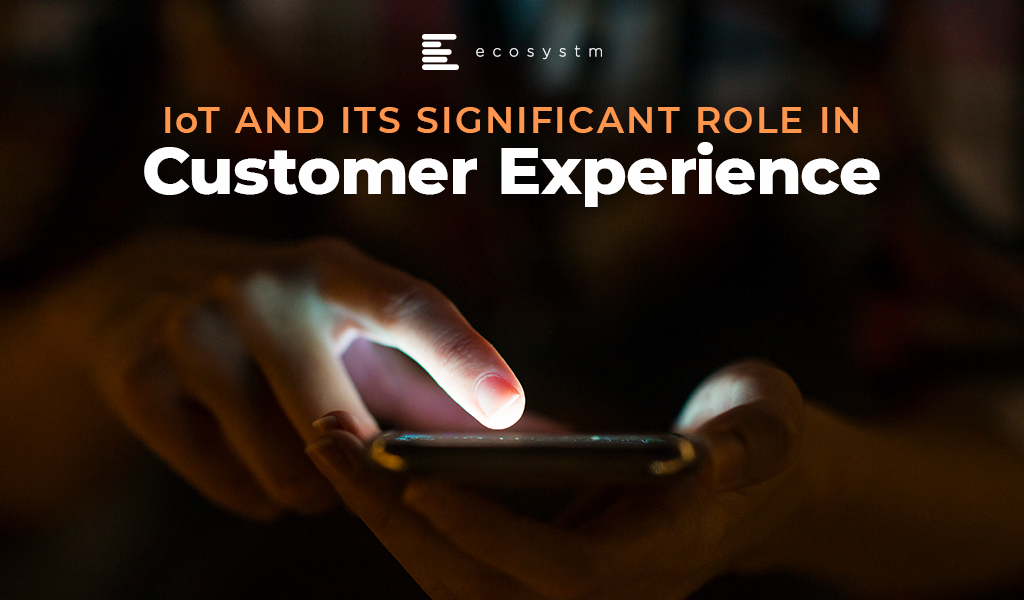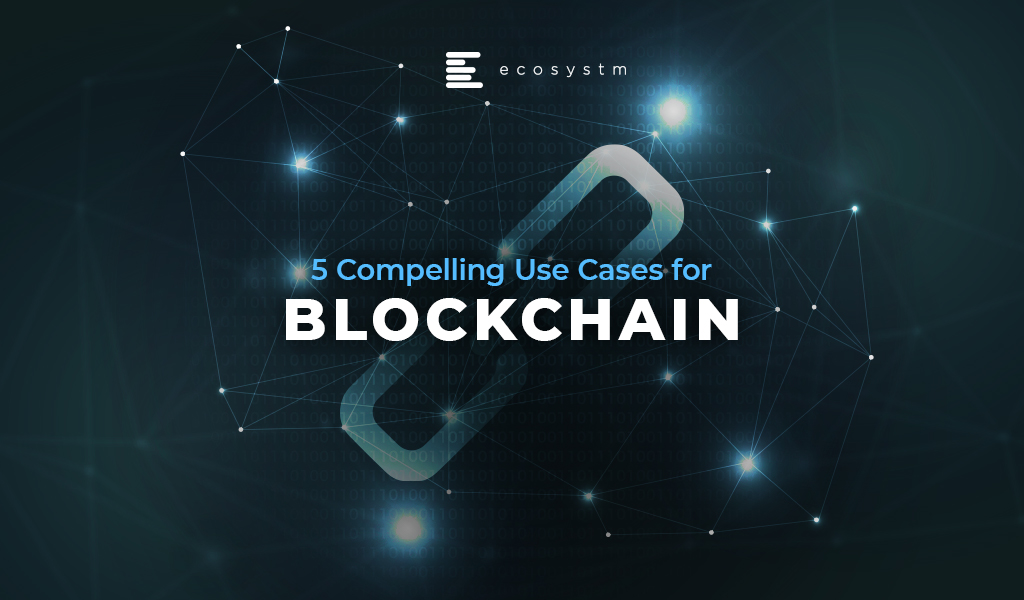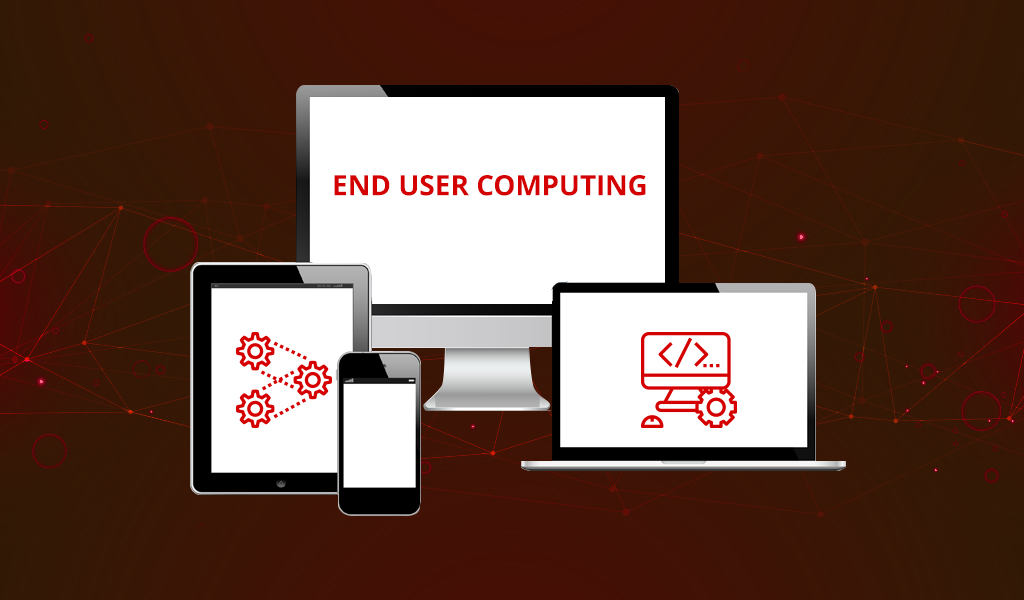I was a guest last week at the NICE Interactions Summit in Sydney and it was great to hear from executives from NICE talk about the journey the company is taking their customers on. Australia and New Zealand are witnessing good adoption of cloud contact centres and many organisations (as covered in some of previous blogs) are at the inflection point of investing in a cloud contact centre, machine learning, customer journey mapping and predictive analytics technologies to drive greater customer experience (CX). Across Asia Pacific and in the ASEAN region, more organisations are at the verge of embarking on transformational CX projects to help them raise the bar on CX in a highly competitive environment. We can expect the adoption of cloud contact centres to grow rapidly in the next few years across the Asia Pacific region as companies move from expensive and traditional legacy environments to agile platforms.
Investing in Analytics and Cloud
Darren Rushworth, NICE’s Managing Director APAC, talked about how NICE has moved from being an infrastructure player to become an analytics company and talked about the acquisitions that are helping them alleviate their game in CX. Key acquisitions since 2016 have been instrumental to shaping their offerings and these include Nexidia, an Interaction Analytics software company and InContact, a cloud contact centre vendor. In 2019 NICE acquired Brand Embassy, whose technology brings to CXone a full range of integrated channels, enabling any digital channel to be integrated into customer service operations. In a Mobile First economy where customers want the applications of their choice, allowing customers to use the social media or messaging application of their choice in their contact centre interactions, will be critical. The Brand Embassy platform supports more than 30 channels and these include Facebook Messenger, Twitter, Apple Business Chat, WhatsApp, LinkedIn, SMS, email, and live chat. This is an important acquisition and not many contact centres have addressed the issue of allowing multiple forms of messaging to be used when customers want to communicate an issue or get answer to a query. Customers are gravitating towards social media platforms and messaging apps for daily communication and being able to integrate those channels to the contact centre is important.
The Move to the Cloud with NICEinContact
It was interesting to hear Tracy Duthie, Head of Service Development at 2degrees Mobile talk about why they deployed a NICEinContact solution. She talked about 2degrees having too many legacy systems that were not all integrated. The problems with not having the systems integrated drove the team to think hard about embarking on a journey with NICE. The objective was to grow their market share and to drive greater contact centre efficiency. She mentioned that 2degrees were keen on a SaaS option and it was not just about replacing the legacy solution. The move to the cloud as many organisations are starting to tell me, is to drive transformation and further innovation including deploying agile methodologies to deliver great CX. Also because this was a cloud deployment, they invested heavily in the network. This is an important aspect for an organisation when embarking on a cloud journey especially for mission critical applications such as voice, video and collaboration applications where latency and jitter can spoil the experience. Many times, I have heard customers blame the vendor for the technology. For cloud voice, video and other contact centre applications to work well in real time, the investment in the network must not be compromised especially when working on a tight budget. When this aspect is ignored, the problems discussed early are bound to arise. She also highlighted how important it was to eventually get the agents on board the new deployment and they adopted an open culture of allowing the agents to provide feedback and an open dialogue was initiated. As this was a big change from when they were running the contact centre in a traditional environment, the change management aspect was critical for the agents.
Compliance is something that has to be adhered to seriously
Efrat Kanner-Nissimov from NICE presented on driving a proactive compliance culture. This is a highly talked about area in the contact centre, given the increase in legislation around privacy and all countries having strict legislation around customer data and data privacy. Contact centres store sensitive customer information and knowing when to dispose off that data or for how long the data can be kept is an aspect that cannot be ignored. With what the banks have been through in Australia in recent times with the Royal Commission, serious questions around compliance and how compliant the agents are cannot be ignored. Ecosystm research finds that several organisations fail to identify what could be sensitive information. The journey towards a compliant environment starts with data classification, long before security roadmaps and solution implementations.
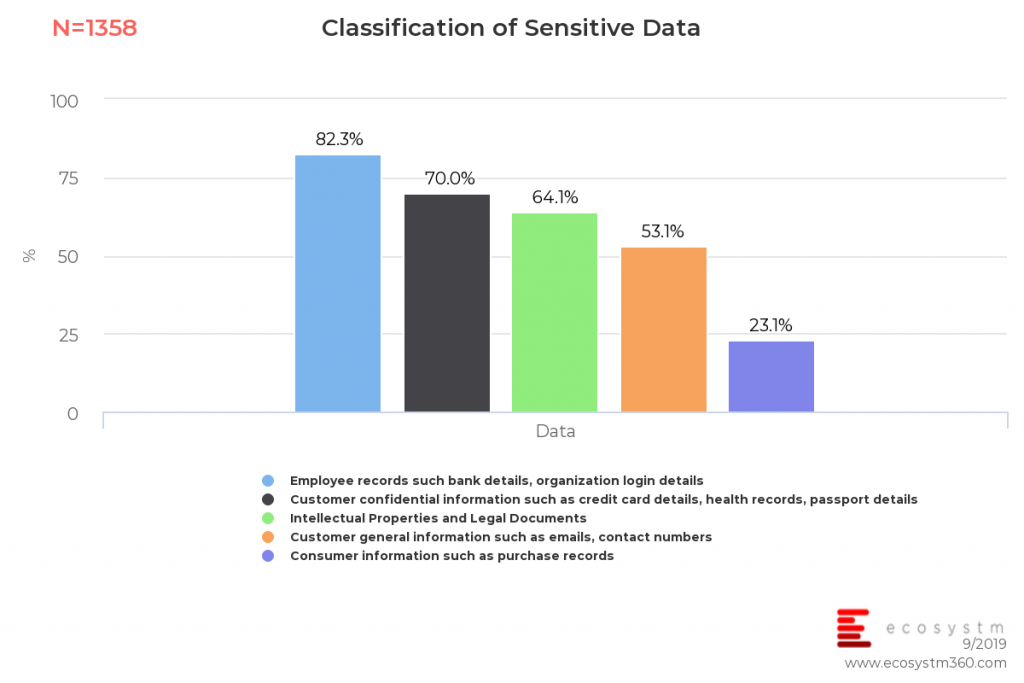
There is a greater emphasis on compliance and whilst many contact centres will claim that they have the processes in place, some of these have not been looked at for years. Compliance impacts the IT Manager, the agents, the Supervisor and ultimately the business. An automated compliance solution will help detect violations, prevent errors and allow for better visibility across different systems. She presented how Macy’s claims to have reduced their infrastructure and storage costs by 40%, through automating and deleting interactions that were no longer required. This helped lower IT costs and reduced time on audits. With the emphasis today on data privacy, data storage, data deletion and being compliant when you talk to your customers, the CX agents have a critical role to play in ensuring compliance.
Ecosystm comment:
Organisations across the Asia Pacific region are re-inventing how they look at CX as mentioned in my previous blogs. Banks, airlines, retailers, telcos and organisations from other verticals are investing in projects to drive transformation in CX. Applying deep analytics along every step of a customer’s journey will help the contact centre and the wider organisation better serve customers. The traditional methods of just looking at inbound and outbound interactions and setting KPIs for that, are no longer enough to drive this new vision. Machine learning, customer journey mapping and analytics, as well as shifting to the cloud is needed to drive transformation and agile ways of running CX. The Brand Embassy acquisition is an important one for NICE given one of the challenges not addressed by contact centres is integrating the various social and messaging applications and making them available to customers as a way to interact with the brand. This is an area contact centres have been looking to resolve.
In a highly competitive CX market where CRM, analytics, cloud and machine learning technologies are important aspects of a CX journey, NICE is investing in these areas to further strengthen their cloud contact centre value proposition. Compliance as highlighted earlier cannot be ignored and it is an area contact centres will be looking to invest in due to the multiple strict regulations underway across the Asia Pacific region surrounding how customers data is treated.
Cisco announced their plans to acquire CloudCherry to bolster their contact centre portfolio. Launched in Chennai in 2014, CloudCherry is a customer experience (CX) management startup that helps organisations understand the various factors influencing CX. CloudCherry has employees in Chennai, Bengaluru, Singapore and Malaysia, besides the US and their team of around 90 employees will join Cisco’s contact centre solution practice as part of the acquisition
Using artificial intelligence (AI) as the underlying solution to CloudCherry’s open API platform allows for various customer data sets from CRM systems to other communication touchpoints in the contact centre to be analysed in real-time for the organisation to deliver a personalised CX. When agents can understand what is taking place in real-time and when the contact centre team has one integrated point of data injecting analytics, improving the ability to drive greater loyalty and eventually higher revenues.
Some of CloudCherry’s offerings are:
- Measuring customer journeys. CloudCherry provides the opportunity to follow the customer across 17 different channels, driving contextual real-time conversations with customers on the channels they choose. It is important to understand the micro journeys – for example, their customer PUMA sells products online and in physical stores and may have two micro journeys in addition to an overall customer journey map for:
- Online customers
- In-store customers
- Blended customers
- Predictive Analytics. Their predictive engine is based on customer feedback, their actions and their purchasing data. With advanced predictive analytics, CX teams can derive what is needed to increase the ROI.
- Questionnaire builder. They have the capability to respond to feedback collected from surveys in real-time. There are set conditions for survey questions so that when triggered by customer response, the concerned employee or department is quickly notified regarding it. For instance, when a customer gives a low rating on store cleanliness or staff behaviour, an alert can be immediately sent to the concerned employee to follow up and take corrective action. At the same time, even positive feedback can be noted in order to recognise and reward employees.
- Sentiment Analysis. This helps organisations tap into machine learning and deep learning to identify customer sentiment associated with open-text responses and brand conversations.
These are just some of the applications and tools the CloudCherry platform offers to their customers.
Leading with data will be critical to driving personalised CX
CX decision-makers and buyers of contact centre and CX technologies have an important role to play in the next few years to look at re-inventing how they view CX. This means re-looking at the ways they have been running contact centres in the traditional way and making investments towards the cloud, machine learning and predictive analytics.
- By having rich analytics, mobile conversation through the app can be richer. A Mobile-led CX approach is key in today’s world where most people spend hours on a phone.
- Issues can be prevented before they happen if in-store transactions are monitored and dissatisfied customers can be identified. The organisation has the ability to reach out to the customer through any touchpoint to mention proactively that they are aware of the issues that just happened and what they can do to help solve the negative experience. Proactive notifications demonstrate how a brand takes it, customers, seriously
- Leveraging AI as the underlying platform to understand customer behaviour is going to be the next battleground for CX vendors. The challenge so far has been that many organisations have invested in several data and CRM tools from various vendors. When agents have to view customer information, they are dealing with data in an unsynchronised format. This explains why when we contact a contact centre, we sometimes have to repeat ourselves and state the problem we are facing. Or worse than that, the agent has no idea that we had a problem a week ago and spoke to 2 agents. These frustrations are real and still happen today.
- Contact centre of the future will not be reactive but proactive in helping understand customer sentiment in real-time to make the necessary adjustments and actions needed to solve the issue the customer is facing. The deep analytics platform for CX also means that agents will be empowered with information and bots can be placed to help agents say the right things or make suggestions to customers. The use cases to help deliver personalised CX are enormous.
Ecosystm comment
This is an important and good acquisition for Cisco. Cisco has a vast set of customers globally and in the Asia Pacific region in the collaboration, voice and contact centre space. This acquisition marks how they are investing in enhancing their existing contact centre portfolio to use machine learning, cognitive and predictive analytics to alleviate their offerings. The contact centre is a key part of Cisco’s larger collaboration portfolio.
According to the company, Cisco products support more than 30,000 contact centre customers and more than 3 million contact centre agents around the world. Vasili Triant, VP and GM of Cisco Contact Centre solutions mentioned in a blog recently that the acquisition will augment Cisco’s contact centre portfolio with advanced analytics, journey mapping and sophisticated survey capabilities whether their customers are using Webex Contact Centre in the cloud or their hosted and on-premises solutions.
The market for predictive analytics and customer analytics in the contact centre and across the CX segment will be big and we are at the beginning of a new era of organisations using data as the platform to deliver a new way of engaging with customers. CloudCherry offers a CX management platform that uses predictive analytics to derive insights for contact centre agents. The market for deep analytics is becoming an important area of investment for organisations as a way to decrease customer frustration. It is by applying analytics before, during and after the call that will allow contact centres to deliver a personalised CX as was mentioned in my last blog. This is the reason why a data-driven culture will be key to driving rich outcomes for the contact centre. Contact centres will have to lead with analytics so that every experience across every single touchpoint the customer has with the brand is analysed and observed in real-time. We will see many contact centre vendors and players in the CRM space acquire companies with capabilities like what CloudCherry offers.
Click below to access insights from the Ecosystm Contact Centre Study on visibility into organisations’ priorities when running a Contact Centre (both in-house and outsourced models) and the technologies implemented and being evaluated
Organisations are increasingly focusing on customer experience (CX), and it is overtaking pricing and product development as the key brand differentiator. The global Ecosystm CX study discovered that improving customer satisfaction is the key business priority across industries – even in industries that have not had a traditional focus on customers such as Manufacturing and Construction.
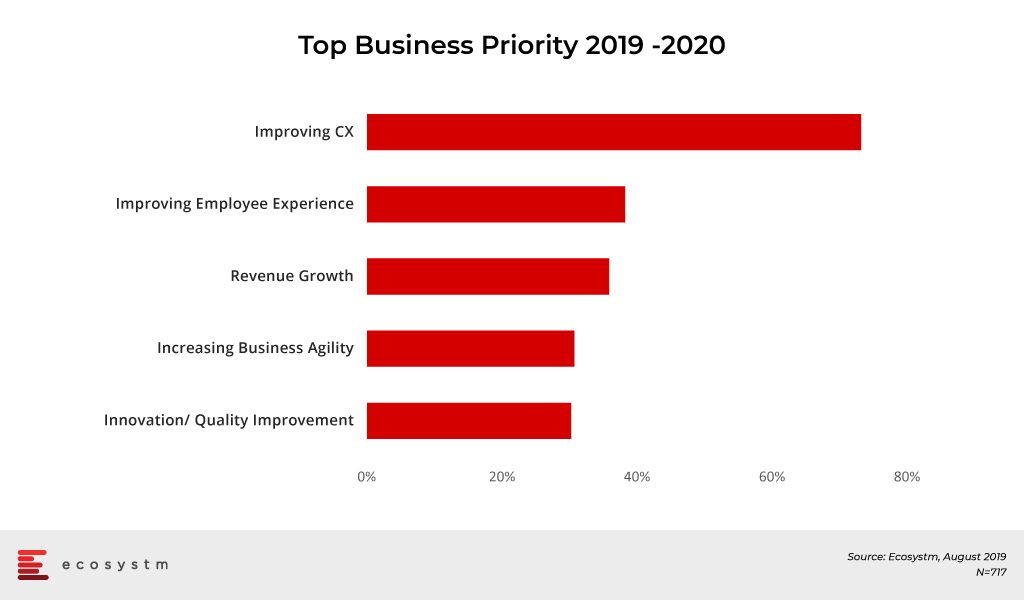
IoT is already impacting CX
We should keep in mind that IoT customers are not just those who enjoy the advantages of a Smart Home or the patients that share health and wellness data from wearables and medical devices with medical professionals. IoT customers are also the Maintenance Director of a Manufacturing plant floor, the Field Service technician using a predictive maintenance application, the Purchasing Director, the Marketing Director or the Product Director who use sensor data from connected products around the world in an intuitive and easy-to-use platform to improve usability or to sell more.
IoT can improve CX on multiple counts
Let’s see some examples:
- The right IoT sensor and actuator can boost customer satisfaction. For instance, by installing intelligent IoT sensors in the physical store environment, retailers can collect contextual data such as sound, temperature, or traffic patterns and will uncover how physical elements of a location correlate to customer satisfaction.
- IoT devices like wearables or smart home devices with good features improve the quality of life and have revolutionised CX.
- Effective IoT connectivity management is key to a successful IoT deployment. IoT connectivity enriches communication with customers too. The sensors and IoT devices that are inbuilt into products can feed data back regarding usage patterns and even detect problems. This data can be used to the manufacturer’s advantage allowing them to send across personalised communication to customers.
- IoT platforms with Artificial Intelligence (AI) components facilitate analysis of the ways customers are interacting with their devices over time, and helps identify frequently and rarely used features, allowing the building of better devices and applications fitted better to customer needs.
- IoT applications like condition-based monitoring allows the prevention of failures before they occur rather than waiting for problems to arise first. Connected devices can schedule predictive maintenance, detect issues before they debilitate functionality and diagnose problems accurately. When connected to a powerful AI-based workforce-management solution, companies can optimally schedule a technician by balancing skills, asset location, parts, technicians’ locations and traffic.
- IoT aids CX through faster Customer Service/Customer Support. Intelligent IoT devices itself could communicate an issue to a support team, even if the customer is unaware of one. Based on this information, a support team could then take several pre-emptive actions, which could include either notifying the customer or even rectifying the issue before the customer is affected. IoT sensors may be able to predict problems before they surface. Perhaps a piece of equipment exhibits certain symptoms before it breaks down. If the IoT device could send an alert to an engineer warning them about the potential problem, the equipment could be fixed before the problem leads to any downtime.
Designing an IoT Product Strategy centred around CX
Here are some points points to keep in mind when designing IoT products with a better user experience.
- The data that you havee gathered from the usage of your products can be used to develop new products. You can figure out what part of your products can be improved upon and then pass on this information to your product development team.
- Never introduce a User Experience (UX) based functionality that does not comply with the core values that the IoT product aims to provide.
- Since IoT-enabled devices come equipped with several sensors, they can easily capture loads of data regarding product motion, biometrics, air moisture, temperature, weather, etc. The product should be designed in such a way that the device makes optimum use of this data to learn deeply about the user and start taking smart and automated decisions on its own.
- Focus on making it easy for the customer to personalise the interface of smart products.
- Think beyond the usual interfaces that are based around screens. Combine with other technologies like AR, Voice Recognition, etc to obtain the desired output functions.
- Your IoT device design should make things simpler and not introduce more complexity into the equation. They should be designed in a way that it involves a minimal amount of training.
- Design with the intent of keeping machine-to-machine interaction at the maximum and autonomous behaviour at the minimum.
- Place the centre of control in the hands of the users. The interface design should make them feel like they run the show. One of the best ways to do this is by enabling remote user interfaces.
- Get information about the time gap between procuring a product and using it, and the date when the product is up for replacement.
- Combine IoT and AI for a better CX.
IoT is no longer in its infancy. The technology is here, available and ready to help organisations connect better to their audiences. There are already millions of users enjoying the benefits of and working with IoT devices. The possibilities of improving CX via IoT are indeed monumental. To keep up with market expectations, IoT vendors must be convinced that IoT will have tremendous positive impact on their relationships with their customers.
IoT vendors should be transparent and inform customers that they are using their usage data to optimise the design of products and services and to significantly improve customer satisfaction.
What are your views? Let me know in the comments.
It can often be difficult to keep track of assets and transactions in a business, and that is where Blockchain is unleashing its potential. It is revolutionising enterprises with its shared ledger technology. There are numerous, and specialised, use cases of Blockchain but the adoption is nascent in most industries. There are a few early adoption use cases of Blockchain, however, which have the potential to replace traditional systems and processes.
In the global Ecosystm Mobility study, organisations are asked about the adoption of Blockchain as a means of authentication. Industries that appear most open to Blockchain adoption are those that have also embraced IoT for tracking and traceability.
Adoption of Blockchain for Authentication – An Industry Comparison
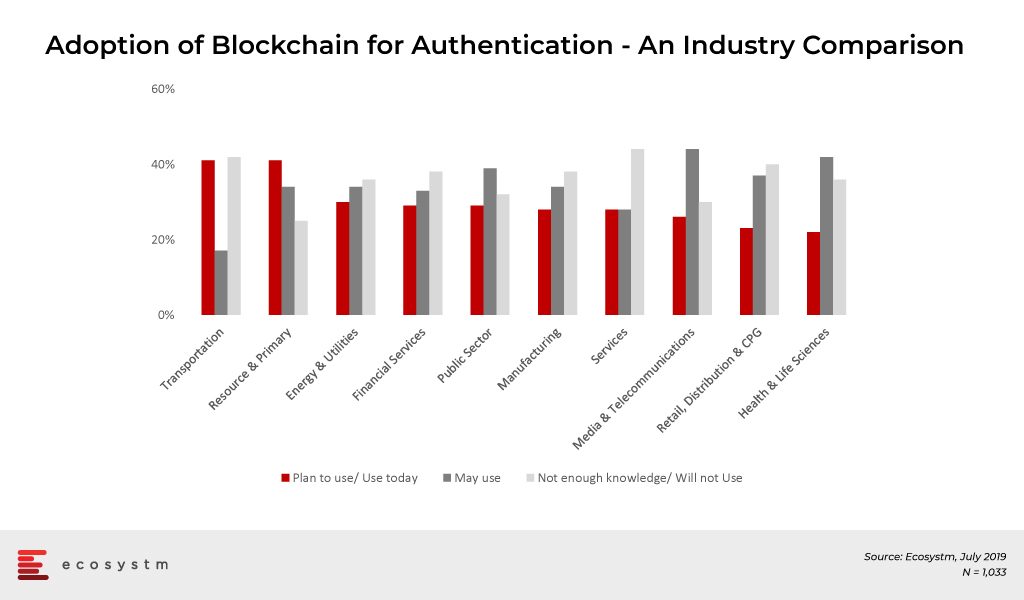
Across industries Blockchain technology is being used primarily for these use cases:
Supply Chain Traceability
Supply chain traceability allows producers, retailers, and consumers to track products from source to consumer. It connects all points in the supply chain, creating transparency and trust in the product. When a business comprises complex processes, a large and dispersed workforce, multiple locations and different operations, a lot of administrative and regulatory frameworks are required to manage and control the supply chain. Functions such as order management, procurement, import, delivery, tracking, and invoicing have their own unique set of requirements and processes. In several cases, especially across primary and retail industries, business complexity has been reduced with the use of Blockchain. The technology allows for improving digital assets and inventory tracking for better services and processes.
Blockchain is ensuring food safety by providing a complete view of the supply chain and creating a real-time trail of products – allowing a ‘farm to fork’ view. Walmart is a good example of how retailers can use Blockchain technology to ensure that they sell fresh produce. Fresh produce shipments can be tracked as they change hands from the farmers to the middlemen, to the distributor and finally to the store. This can have an enormous impact on containing food-borne diseases and food contamination. Not only does Blockchain increase food safety, it ensures fresher food since it secures production and packing dates.
Intellectual Property Intermediary (IPI), an organisation established under Singapore’s Ministry of Trade and Industry, is an affiliate of Enterprise Singapore and focuses on technology innovations in the industry that can empower enterprises to develop new processes, products, and services. IPI has identified Blockchain Technology for Food as an area where the industry can benefit from innovation. The ecosystem will also benefit from the information gathered, with the potential to further improve the production chain.
Fraud Prevention
Taking supply chain visibility a step further, Blockchain technology is being used for fraud prevention – especially payment fraud. Financial transactions are complex and involve multi-step processes and human intervention – involving collaterals, settlement, currency denominations, third-party mediation, and so on. It is often the prime target for fraudsters. The most common instances of fraud involve bank to bank transactions, mobile payments, and digital identity fraud, essentially by tampering with ID or using it an unsanctioned way – providing unauthorised access to digital systems and falsifying information.
Blockchain helps automate preventive measures enabling real-time information sharing which is transmitted on a chain of connected devices where all the nodes in a system verify the transaction. Since it stores the data on several nodes and every other user on the network has a copy of the entire data on the Blockchain, it is virtually impossible to hack or destroy it completely.
Earlier this year, Standard Chartered Singapore showcased their cross-border trade finance transaction which digitalises trade processes and financing documentation. Blockchain enabled the transaction between parties by digitally streamlining the documentation process while providing security and transparency between the partners. Not only does it support the clients’ entire supply chain, but it also creates a transparent way to provide same-day trade financing.
Non-profit organisation BitGive Foundation uses Blockchain technology to provide greater visibility to their donors into the receipt of funds and how they are used by sharing financial information and project results in real-time. The GiveTrack project is built on Bitcoin and Blockchain and is a user-friendly, data-centered and comprehensive user interface. People making donations can precisely track the donations and how the funds were used.
Legal & Compliance
In industries that have higher Compliance & Regulatory requirements, Blockchain can enable safe, secure, and scalable data-sharing. The industry is seeing instances of self-executing contracts, smart registries, secure and time-stamped documents with Blockchain. Blockchain is introducing abilities to record events for a long duration which might include indisputable claims, criminal records, case procedures to support the potential legal work.
Dubai launched a city wide blockchain strategy. Dubai Land Department is implementing blockchain to make property transactions secure, transparent and immutable, thereby reducing fraud and eliminating reams of physical documents. This impacts the entire ecosystem – customers, developers, the land department, utility providers, payment channels, and municipalities – to work in collaboration.
Shipping companies that need to enforce global contracts daily are also benefitting from Blockchain. However, the biggest use cases will eventually come from the Public Sector – across citizen services and criminal justice systems. For instance, National Stock Exchange of India (NSE) is testing Blockchain e-voting facilities. The project is still at the pilot stage and aims to tokenised voting which makes it easy to conduct test and audit for the votes. This allows the regulating authorities to access real-time data, and at the same time, provides means to audit the regulators.
Cybersecurity
73% of global organisations believe that a data breach is inevitable, according to the Ecosystem Cybersecurity Study, and only 18% of them use some form of tokenisation and other cryptographic tools. Blockchain technology offers several capabilities in mitigating cybersecurity risks and detecting and combating cyber attacks. For example, Blockchain can be used to prevent DDoS attacks, and crypto secured biometric keys can replace passwords providing robust ID authentication systems, more secure DNS and decentralised storage. Blockchain implementation can also prevent man-in-the-middle (MITM) attacks by encrypting the data in transit so it is not manipulated during the transmission or accessed by unauthorised parties – thus maintaining data integrity and confidentiality.
Lockheed Martin, a US security company, is implementing Blockchain into their protocol. The company is enhancing Blockchain cybersecurity protocol measures in engineering systems, supply chain risk management, and software development. This includes researching on expanding on Blockchain capabilities protect their weapons development unit and make it incorruptible.
eGovernment initiatives will also benefit from Blockchain. The biggest stumbling block for providing eservices has always been cybersecurity, where the Government cannot be sure that the citizens are able to access their own records in a secure manner. It has always been a question of responsibility and liability – is the Government liable for a data breach that happens because of a citizen’s fault? Estonia is using Blockchain to protect their digital services such as electronic health records, legal records, police records, banking information, covering data and devices from attacks, misuse, and corruption.
Customer Experience
The ultimate benefit of Blockchain will be realised when it is used to enhance Customer Experience (CX). It brings transparency in doing business, gives on-demand data visibility and fosters trust in customers. A company that shows all transactions between the company and the customer, and in a secure manner, can create a better relationship, increase overall customer satisfaction and retain their customers in a competitive market. For example, Blockchain technology can allow more secure and transparent loyalty programmes, through token creation that can be redeemed on-demand, without customer service intervention. Singapore Airlines’ KrisFlyer structures their payments and loyalty programme with Blockchain. Their digital wallet enables members to convert KrisFlyer miles into KrisPay miles instantly to pay for their purchases at partner merchants. The users can pay through an application by scanning a QR code at a merchant’s location .
Customers will increasingly look for ease of use and security in their transactions. Bank of America has filed a patent for Blockchain powered ATM, for securing records and authenticating business and personal data. This will boost the transaction rate and facilitate various transaction experience with full encryption and security. Blockchain-enabled transactions can be registered and completed with greater easy while lowering the transaction costs for customers and keeping the network safe.
While Blockchain technology is continuing to evolve for a range of applications and industries, it comes with its own share of risks. Adoption should not be based on the hype around the technology but should be evaluated carefully. The starting point should obviously be a real business needs analysis.
Speak with an expert today to evaluate whether your organisation can benefit from Blockchain.
I recently attended the Verint Engage event in Sydney, which had over 700 attendees. Conversations on artificial intelligence (AI) and analytics garnered a lot of attention this year. Verint showcased the deployments of intelligent conversational bots used by some of the biggest brands in Asia Pacific. Some of these customers include Spark NZ, Suncorp and AAMI. In 2018, the company acquired Next IT, a provider of conversational AI virtual assistant, to accelerate their move in the automation and analytics space. Verint’s choice of Next IT was driven by the need to provide their customers with a solution that has deep expertise in the contact centre space and to have an automation solution that is deeply integrated into their broad portfolio of solutions.
Last week, Verint announced the launch of AI Blueprint, a conversation analysis system that identifies intelligent virtual assistant (IVA) use cases and accelerates automation. The solution then delivers a “blueprint” of precisely how businesses can get started with AI or continue to grow their AI capabilities.
Verint is no stranger to the contact centre market and has an established presence in areas of quality monitoring, analytics, knowledge management and compliance.
Key Takeaways from Customers on Intelligent Virtual Assistants:
- Engaging senior stakeholders. For a successful deployment, many organisations had to involve senior management in the discussion. These ranged from CIOs, CDOs and CEOs. The conversation around automation and AI for customer service is no longer contained within the contact centre. Many organisations spoke about having senior management involved in the pre and post launch of the virtual assistant deployment. Getting buy-in and feedback from senior management is key as the AI discussion forms part of a broader digital strategy for the organisation. The global Ecosystm AI study, which is live and ongoing, also finds that senior management is the second highest influencer for AI procurement and implementations.
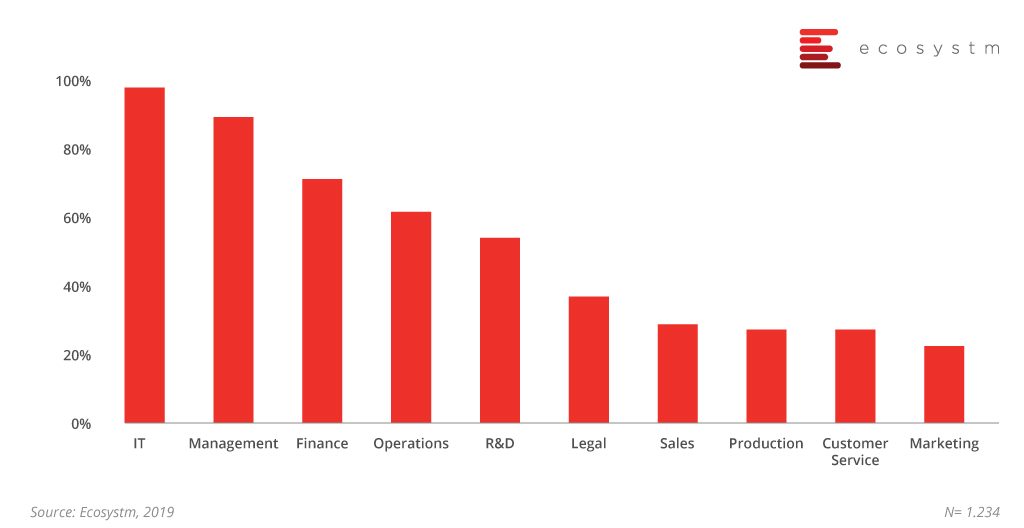
- Integrating Knowledge Management to the AI deployment is important. Organisations at the Verint Engage event highlighted that the route to a successful intelligent virtual assistant deployment is to embed knowledge management capabilities into the AI platform. By failing to incorporate knowledge management, the intelligent virtual assistant experience will be poor, leaving customers frustrated.
- Working with a vendor that understands contact centres is key. Some of the customers at the event had worked with other well-known brands AI in the market prior to working with Verint. They moved to Verint primarily for two reasons. One was that the cost of deployment was less on the Verint platform and secondly, they wanted to work with a vendor that not only understood AI but that had a deep understanding of the contact centre environment. Compliance, training, speech analytics, coaching and quality monitoring are core capabilities of Verint’s portfolio. These are important elements in the overall deployment of AI.
- Striking the right balance between automation and voice. Several of the organisations highlighted the savings realised, when the deployment was done well and fully integrated into knowledge management. Automation will in the long run help reduce contact centre calls and live chat costs. However, it was emphasised that the agent or human element remains important and cannot be ignored. The seamless hand off to the agent when the query cannot be answered is important.
Ecosystm Comment:
Virtual assistants need to be fed with the right information to make the discussion with the customer engaging. A solid knowledge management strategy is key to the success of a virtual assistant deployment. Without analytics and knowledge management integrated into AI, the CX will be poor leaving customers feeling frustrated. When deployed well, the virtual assistant can help answer most of the queries due to a structured knowledge bank with detailed FAQ. The ability to have it updated regularly and in real time is critical. It is important for contact centres to not rely on full automation within the contact centre.
Verint is starting to win deals in the AI and virtual assistant space with some of the largest brands in Asia Pacific. Some of the customers include those from the financial services sector. Verint’s success is not just in the intelligent virtual assistant market. It is their ability to deliver an all-encompassing solution across self-service, analytics, knowledge management, quality monitoring and compliance.
For most companies, End-User Computing (EUC) is considered an expense to the business. EUC strategies are typically exercises in cutting costs – with often not much more than lip service given to the needs of employees (or employee personas). I know – I help companies write these strategies, and the costing component is always the piece that gets the strategy over the line.
But the winds are changing. Employee Experience (EX) is taking off as a serious business initiative. For example:
- Edmunds.com wrapped the traditional Facilities and Human Resources functions into a combined WEE Team which represents Workplace and Employment Experience. They engaged in a campaign to rid the company of the term “Human Resources”
- Airbnb has a dedicated team to “drive the company’s health and happiness”
- Nitro has “turned old-school HR on its head and instead created Employee Experience (EX)
In our upcoming CX research, the early data is showing that EX is the number two initiative for businesses across the globe in 2019. And for information workers, the technology that sits in front of them is a HUGE component of their experience – and their ability to get and stay productive.
Productivity Should Be The Focus Of Our EUC Strategies
Smart businesses understand that. They allow employees to choose (or bring) the devices that they need to remain productive. While desktop PCs might not be making a comeback, they are increasingly being adopted as an alternative to the “laptop as one device” strategy that many businesses embrace. Sometimes a powerful computer with a big screen (or multiple screens) is what people need to get the job done. Other times a small form factor desktop is perfect. Employees may need tablets or smartphones. And other times they need regular laptops, convertibles, or 4G connected laptops. Smart businesses also focus on seamless security – knowing that security is a key enabler of productivity. We are seeing that “The best, most secure device for the job” is taking off as a EUC hardware strategy in businesses that are striving to build a productive and enjoyable employee experience. This helps them to keep employees productive and will help them attract and retain the best talent.

And EUC goes beyond the device to the entire user experience
Collaboration initiatives often disappoint. Limited adoption, and limited interoperability between applications limits effectiveness. There is often a disconnection between the collaboration system and how it helps employees hit their goals. Microsoft is currently rebooting its collaboration strategy – and has created a more modern system that more closely mimics the processes of a typical information worker (Teams). Slack is also taking the world by storm – as it is a collaboration tool that helps people the way they work today – it doesn’t require any training.

IT Operations professionals need to take a fresh look at EUC – but this time within the context of the other initiatives in your business. Do you already have a team focusing on EX? Are there initiatives you can help with – or piggyback on? There is real academic research proving the link between happiness and productivity – or the “state of flow”. IT holds the key to productivity – and therefore happiness – for information workers in particular – it’s time to step up and put employee experience and productivity – not costs – at the centre of our IT end-user computing strategies.



